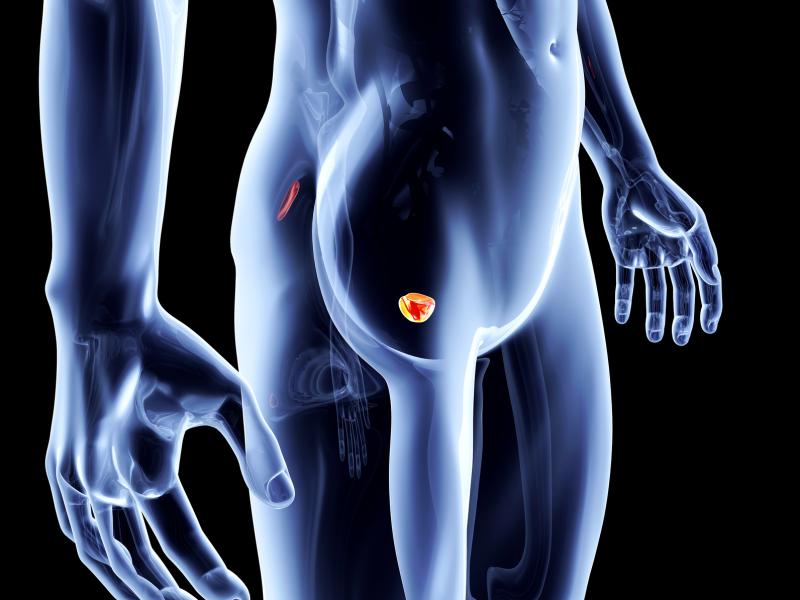
Use of apalutamide in the treatment of patients with high-risk nonmetastatic castration-resistant prostate cancer (nmCRPC) cuts the risk of death by 25 percent compared with placebo, according to the results of the second prespecified interim analysis of the SPARTAN trial.
“This overall survival (OS) benefit was observed despite crossover of placebo-treated patients and higher rates of subsequent life-prolonging therapy for the placebo group,” the investigators said.
SPARTAN randomized 1,277 nmCRPC patients undergoing androgen deprivation therapy to receive either apalutamide (240 mg daily; n=803) or placebo (n=474). Among those who received placebo, 76 crossed over to the active treatment group.
In the current analysis, the investigators recorded 285 OS events over a median follow-up of 41 months. Median OS was not reached in either treatment group, but fewer deaths occurred with apalutamide (22 percent vs 27 percent).
Compared with placebo, the active drug improved OS by 25 percent (hazard ratio [HR], 0.75, 95 percent CI, 0.59–0.96; p=0.0197). However, the p-value did not cross the prespecified O’Brien–Fleming boundary of 0.0121. The final OS analysis will be performed after 427 deaths have been observed. [Ann Oncol 2019;doi:10.1093/annonc/mdz397]
The 4-year survival rates were 72 percent with apalutamide and 65 percent with placebo group. When adjusted to account for patients who crossed over from placebo to apalutamide, the corresponding rates were 72 percent and 61 percent.
Results for disease progression following second-line therapy (PFS2) also favoured apalutamide (55.6 vs 43.8 months; HR, 0.55, 0.45–0.68; p<0.0001). The corresponding 4-year PFS2 rates were 64 percent and 45 percent.
Subsequent life-prolonging therapy for metastatic CRPC had been administered to 69 percent of patients in the placebo group and in 40 percent in the active treatment group, with abiraterone acetate plus prednisone being the most common postprogression treatment used.
No new safety signals were observed. Grades 3–4 adverse events occurred in 54 percent of patients in the apalutamide group and in 68 percent in the placebo group. Commonly reported events were skin rash (2.7 percent vs 0.2 percent), falls (1.2 percent vs 0.7 percent) and fractures (2.0 percent vs 0.9 percent).
“These data suggest that the statistically significant improvement in metastasis-free survival (MFS) and time to symptomatic progression observed with apalutamide may translate into a survival advantage in patients with nmCRPC,” according to the investigators, adding the survival benefit is achieved without exacerbation of adverse events. [N Engl J Med 2018;378:1408-1418]
Another important observation is that the effect of the drug might be seen at time points beyond the time of metastasis detection and closer to the OS endpoint, they continued.
“While SPARTAN was not specifically designed to test the question of early vs delayed androgen-signalling inhibitor therapy, and PFS2 was an exploratory end point, the PFS2 data favouring apalutamide over placebo also support the hypothesis that early use of a next-generation androgen-signalling inhibitor in patients with CRPC, before the development of metastases, may provide an advantage over withholding this therapy until metastases develop,” the investigators said.